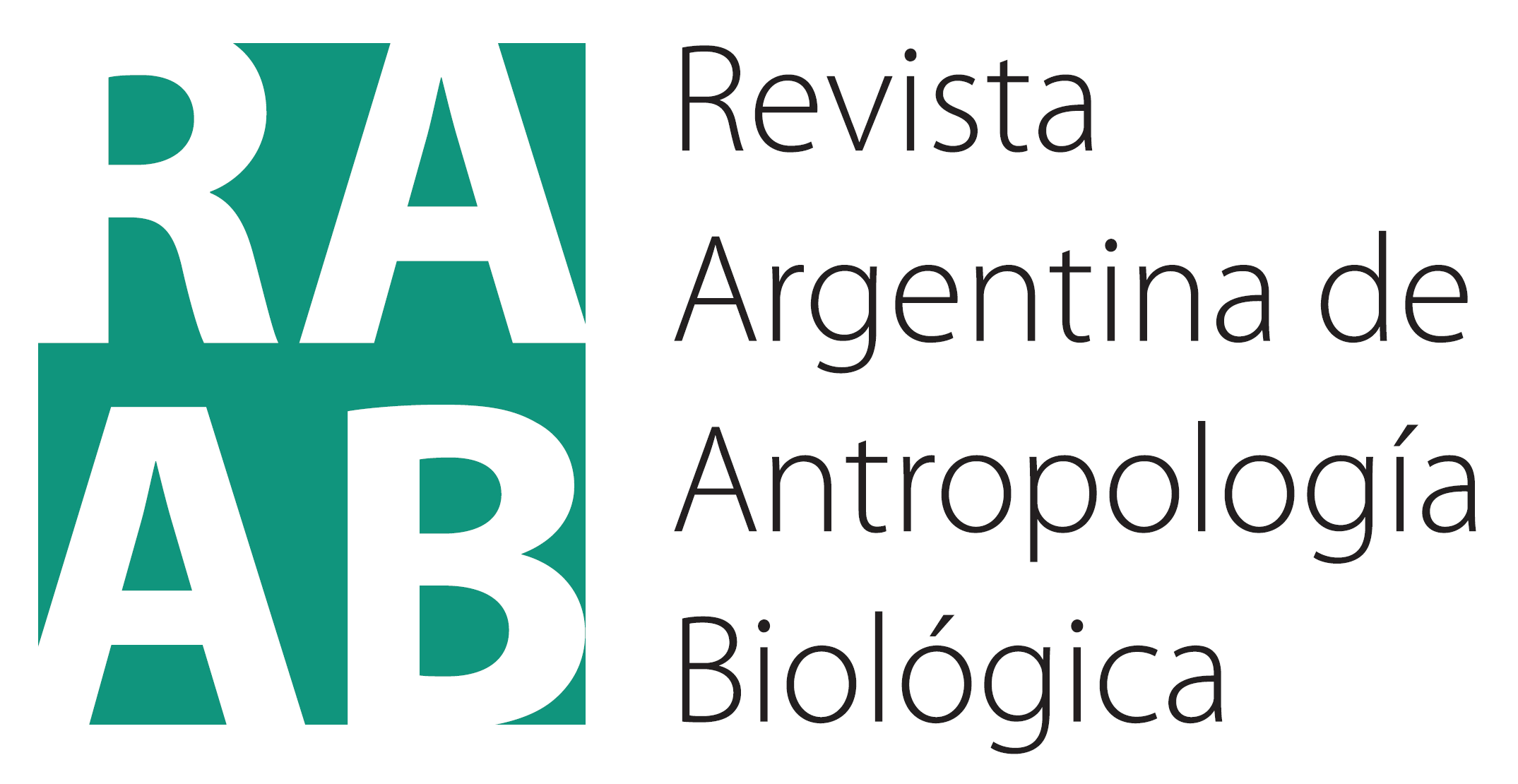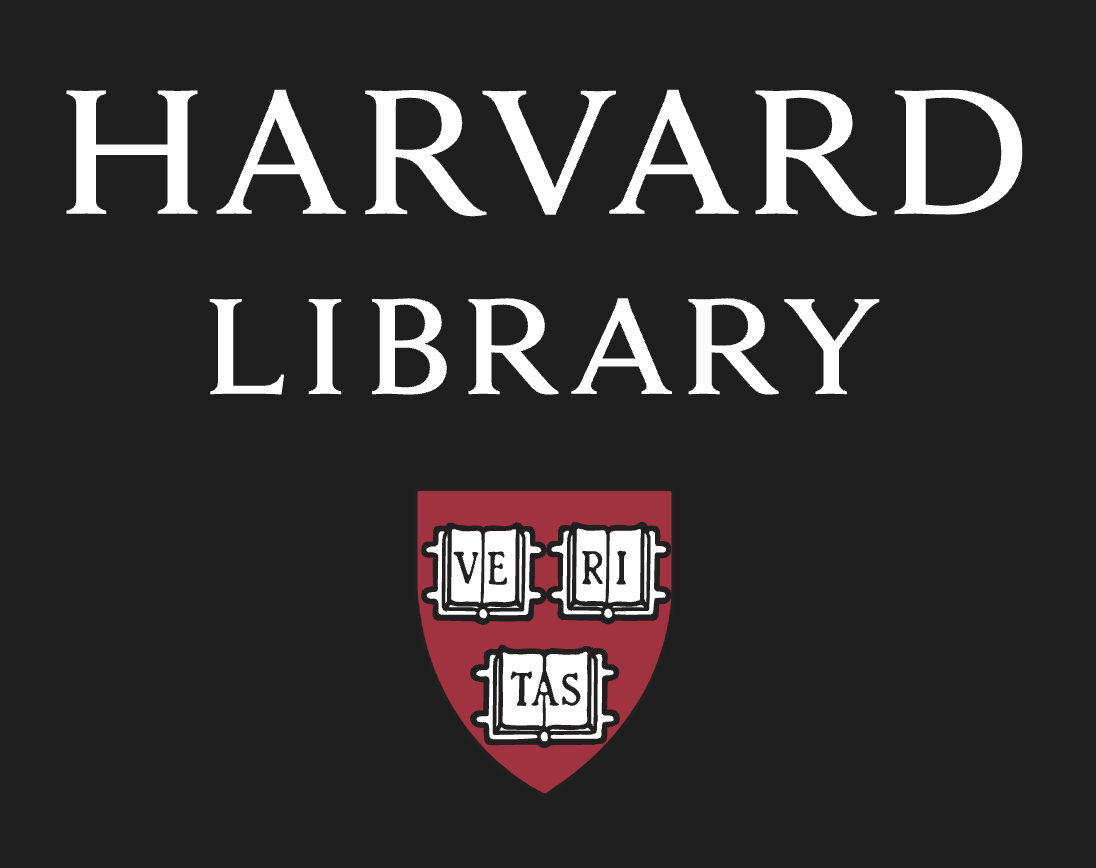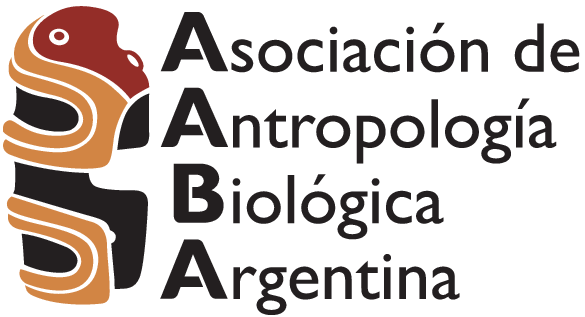Influence of genetic and socio-environmental variables on excess weight in a sample population of Puerto Madryn, Argentina
DOI:
https://doi.org/10.24215/18536387e073Keywords:
risk polymorphism, Argentine population, overweightAbstract
In Argentina, obesity has been on the rise since 2005. The factors shown to be associated with obesity are of a socio environmental and genetic nature. Among the latter, the FTO gene has been the most extensively studied. The aim of the present work was to analyze the relationship between two markers of the FTO gene, namely rs9939609 and rs11075997, and socio environmental variables with nutritional status in a sample of 155 individuals from Puerto Madryn, Chubut. Body mass index (BMI) and waist-to height index (WHtR) were calculated, and multiple linear models were tested to determine the influence of genetic and non-genetic variables on these anthropometric indices. Nutritional status was significantly and negatively associated with educational level and physical activity. The allele reported in the literature as risk allele of the marker rs11075997 was significantly associated with an increase in anthropometric indices in an additive model, more so with WHtR than with BMI. It is necessary to carry out work on a larger scale that will allow us to determine the frequency of the genetic markers of predisposition to obesity studied here and their distribution in our country.
Downloads
Metrics
References
Aguirre, P. (2017). Una historia social de la comida. (1ª ed.). Lugar Editorial.
Aguirre, P. (2004). Ricos flacos y gordos pobres: la alimentación en crisis. (1ª ed.). Colección Claves Para Todos. Capital Intelectual.
Browning, L. M., Hsieh, S. D. y Ashwell, M. (2010). A systematic review of waist-to-height ratio as a screening tool for the prediction of cardiovascular disease and diabetes: 0.5 could be a suitable global boundary value. Nutrition Research Reviews, 23(2), 247-269. https://doi.org/10.1017/S0954422410000144
Cecil, J. E., Tavendale, R., Watt, P., Hetherington, M. M. y Palmer, C. N. A. (2008). An obesity-associated FTO gene variant and increased energy intake in children. The New England Journal of Medicine, 359(24), 2558-66. https://doi.org/10.1056/NEJMoa0803839
Chen, H., Charlat, O., Tartaglia, L. A., Woolf, E. A., Weng, X., Ellis, S. J., Lakey, N. D., Culpepper, J., Moore, K. J., Breitbart, R. E., Duyk, G. M., Tepper, R. I. y Morgenstern, J. P. (1996). Evidence that the diabetes gene encodes the leptin receptor: identification of a mutation in the leptin receptor gene in db/db mice. Cell, 84(3), 491-495. https://doi.org/10.1016/s0092-8674(00)81294-5
Church, C., Moir, L., McMurray, F., Girard, C., Banks, G. T., Teboul, L., Wells, S., Bruning, J. C., Nolan, P. M., Ashcroft, F. M. y Cox, R. D. (2010). Overexpression of Fto leads to increased food intake and results in obesity. Nature Genetics, 42(12), 1086-1092. https://doi.org/10.1038/ng.713
Costa-Urrutia, P., Abud, C., Franco-Trecu, V., Colistro, V., Rodríguez-Arellano, M. E., Alvarez-Fariña, R., Acuña Alonso, V., Bertoni, B. y Granados, J. (2020). Effect of 15 BMI-associated polymorphisms, reported for europeans, across ethnicities and degrees of amerindian ancestry in Mexican children. International Journal of Molecular Sciences, 21(2), 374. https://doi.org/10.3390/ijms21020374
Drewnowski, A. (2009). Obesity, diets, and social inequalities. Nutrition Reviews, 67, 36-39. https://doi.org/10.1111/j.1753-4887.2009.00157.x
Ferrari, M. A. (2013). Estimación de la Ingesta por Recordatorio de 24 Horas. Diaeta, 31(143), 20-25.
Fox, J. y Weisberg, S. (2019). An R Companion to Applied Regression (3ª ed.). SAGE Publications Inc.
Frayling, T. M., Timpson, N. J., Weedon, M. N., Zeggini, E., Freathy, R. M., Lindgren, C. M., Perry, J. R. B., Elliott, K. S., Lango, H., Rayner, N. W., Shields, B., Harries, L. W., Barrett, J. C., Ellard, S., Groves, C. J., Knight, B., Patch, A., Ness, A. R., Ebrahim, S., … y McCarthy, M. I. (2007). A common variant in the FTO gene is associated with body mass index and predisposes to childhood and adult obesity. Science, 316(5826), 889-894. https://doi.org/10.1126/science.1141634
Instituto Nacional de Estadística y Censos. (2019). 4° Encuesta Nacional de Factores de Riesgo. Resultados definitivos. (1ª ed.). INDEC, Secretaría de Salud de la Nación.
Kovalskys, I., Cavagnari, B. M., Zonis, L., Favieri, A., Guajardo, V., Gerardi, A. y Fisberg, M. (2020). La pobreza como determinante de la calidad alimentaria en Argentina. Resultados del Estudio Argentino de Nutrición y Salud (EANS). Nutrición Hospitalaria, 37(1), 114-122. https://dx.doi.org/10.20960/nh.02828
Kruger, H. S., Venter, C. S., Vorster, H. H. y Margetts, B. M. (2002). Physical inactivity is the major determinant of obesity in black women in the North West province, South Africa: The THUSA study. Nutrition, 18(5), 422-427. https://doi.org/10.1016/S0899-9007(01)00751-1
Lee, Y., Kwak, S. y Shin, J. (2022). Effects of recreational physical activity on abdominal obesity in obese South Korean adults. International Journal of Environmental Research and Public Health, 19(22),14634. https://doi.org/10.3390/ijerph192214634
Loos, R. J. F. y Yeo, G. S. H. (2014). The bigger picture of FTO-the first GWAS identified obesity gene. Nature Reviews Endocrinology, 10, 51-61. https://doi.org/10.1038/nrendo.2013.227
Loos, R. J. F. y Yeo, G. S. H. (2022). The genetics of obesity: from discovery to biology. Nature Reviews Genetics, 23(2), 120-133. https://doi.org/10.1038/s41576-021-00414-z
López-Rodríguez, G., Estrada-Neria, A., Suárez-Diéguez, T., Tejero, M. E., Fernández, J. C. y Galván, M. (2020). Common polymorphisms in MC4R and FTO genes are associated with BMI and metabolic indicators in Mexican children: differences by sex and genetic ancestry. Gene, 754, 144840. https://doi.org/10.1016/j.gene.2020.144840
Motti, J. M. B., Muzzio, M., Ramallo, V., Rodenak Kladniew, B., Alfaro, E. L., Dipierri, J. E, Bailliet, G. y Bravi, C. M. (2012). Origen y distribución espacial de linajes maternos nativos en el noroeste y centro oeste argentinos. Revista Argentina de Antropología Biológica, 15(1), 3-14.
Navarro, P., Ramallo, V., Cintas, C., Ruderman, A., de Azevedo, S., Paschetta, C., Pérez, O., Pazos, B., Delrieux, C. y González-José, R. (2019). Body shape: implications in the study of obesity and related traits. American Journal of Human Biology, 32(2), e23323. https://doi.org/10.1002/ajhb.23323
Olmedo, L., Luna, F. J., Zubrzycki, J., Dopazo, H. y Pellon-Maison, M. (2024). Associations between rs9939609 FTO polymorphism with nutrient and food intake and adherence to dietary patterns in an urban Argentinian population. Journal of the Academy of Nutrition and Dietetics, S2212-2672(24)00001-7. Pre-print. https://doi.org/10.1016/j.jand.2024.01.001
Organización Mundial de la Salud. (2014). Global Status Report on noncommunicable diseases. https://www.who.int/publications/i/item/9789241564854
Paeratakul, S., Popkin, B. M., Keyou, G., Adair, L. S. y Stevens, J. (1998). Changes in diet and physical activity affect the body mass index of Chinese adults. International Journal of Obesity and Related Metabolic Disorders, 22(5), 424-431. https://doi.org/10.1038/sj.ijo.0800603
Pérez, O., Ruderman, A., Paschetta, C., de Azevedo, S., Morales, L., Trujillo-Jiménez, A. M., Pazos, B., Ramallo, V., Peral García, P. y González-José, R. (2021). Distribución de haplotipos del gen FTO (dioxigenasa dependiente de α-CETOGLUTARATO) en una muestra de la población de Puerto Madryn. [Ponencia]. Jornadas Argentinas de Genética. Buenos Aires, Argentina. https://sag.org.ar/sitio/jornadas-2021/
R Core Team. (2023). R: A language and environment for statistical computing. (Versión 4.3.0) [Programa informático]. R Foundation for Statistical Computing. https://www.r-project.org/
Reitz, C., Tosto, G., Mayeux, R., Luchsinger, J. A., NIA-LOAD/NCRAD Family Study Group y Alzheimer's Disease Neuroimaging Initiative. (2012). Genetic variants in the Fat and Obesity Associated (FTO) gene and risk of Alzheimer's disease. PloS ONE, 7(12), e50354. https://doi.org/10.1371/journal.pone.0050354
Riffo, B., Asenjo, S., Sáez, K., Aguayo, C., Muñoz, I., Bustos, P., Celis-Morales, C. A., Lagos, J., Sapunar, J. y Ulloa, N. (2012). FTO gene is related to obesity in Chilean Amerindian children and impairs HOMA-IR in prepubertal girls. Pediatric Diabetes, 13(5), 384-391. https://doi.org/10.1111/j.1399-5448.2011.00834.x
Ruderman, A., Luisi, P., Paschetta, C., Teodoroff, T., Pérez, L. O., de Azevedo, S., Trujillo-Jiménez, M. A., Navarro, P., Morales, L., Pazos, B., González-José, R. y Ramallo, V. (2023). Genetic and self-perceived ancestries in Argentina: Beyond the three-hybrid model. American Journal of Biological Anthropology, 181(1), 85-95. https://doi.org/10.1002/ajpa.24702
Sánchez, C. N., Maddalena, N., Penalba, M., Quarleri, M., Torres, V. y Wachs, A. (2017). Relación entre nivel de instrucción y exceso de peso en pacientes de consulta externa: Estudio transversal. Medicina (Buenos Aires), 77(4), 291-296.
Santos M. J. L. (2009). Leptin-melanocortin system, body weight regulation and obesity. Revista Médica de Chile, 137(9), 1225-1234. https://dx.doi.org/10.4067/S0034-98872009000900014
Schloerke, B., Cook, D., Larmarange, J., Briatte, F., Marbach, M., Thoen, E., Elberg, A. y Crowley, J. (2021). GGally: Extension to "ggplot2". R package version 2.1.2. https://CRAN.R-project.org/package=GGally
Speakman, J. R. (2015). The 'Fat mass and obesity related' (FTO) gene: mechanisms of impact on obesity and energy balance. Current Obesity Reports, 4(1), 73-91. 10.1007/s13679-015-0143-1
Trujillo-Jiménez, M. A., Navarro, P., Pazos, B., Morales, L., Ramallo, V., Paschetta, C., de Acevedo, S., Ruderman, A., Pérez, O., Delrieux, C. y Gonzalez-José, R. (2020). body2vec: 3D point cloud reconstruction for precise anthropometry with handheld devices. Journal of Imaging, 6(9), 94. https://doi.org/10.3390/jimaging6090094
Vaisse, C., Clement, K., Guy- Grand, B. y Froguel, P. (1998). A frameshift mutation in MC4R is associated with a dominant form of obesity. Nature Genetics, 20(2), 113-114. https://doi.org/10.1038/2407
Villalobos-Comparan, M., Flores-Dorantes, M., Villarreal-Molina, M., Rodriguez-Cruz, M., Garcia-Ulloa, A.C., Robles, L., Huertas-Vazquez, A., Saucedo-Villarreal, N., Lopez-Alarcon, M., Sanchez-Munoz, F., Dominguez Lopez, A., Gutierrez-Aguilar, R., Menjivar, M., Coral-Vazquez, R., Hernandez-Stengele, G., Vital-Reyes, V.S., Acuna-Alonzo, V., Romero-Hidalgo, S., Ruiz-Gomez, D.G., … y Canizales-Quinteros, S. (2008). The FTO gene is associated with adulthood obesity in the Mexican population. Obesity, 16, 2296-2301. https://doi.org/10.1038/oby.2008.367
Zapata, M. E., Rovirosa, A. y Carmuega, E. (2016). La mesa argentina en las últimas dos décadas. Cambios en el patrón de consumo de alimentos y nutrientes (1996 - 2013). (1ª ed.). Centro de Estudios sobre Nutrición Infantil. https://cesni-biblioteca.org/la-mesa-argentina-en-las-ultimas-2-decadas/
Downloads
Published
How to Cite
Issue
Section
License
Copyright (c) 2024 Anahí Ruderman, Mariana Useglio, Virginia Ramallo, Carolina Paschetta, Soledad de Azevedo, Pablo Navarro, Magda Alexandra Trujillo-Jiménez, Leonardo Morales, Bruno Pazos, Tamara Teodoroff, Rolando González-José, Luis Orlando PérezThe RAAB is a diamond-type open access journal. There are no charges for reading, sending or processing the work. Likewise, authors maintain copyright on their works as well as publication rights without restrictions.




























